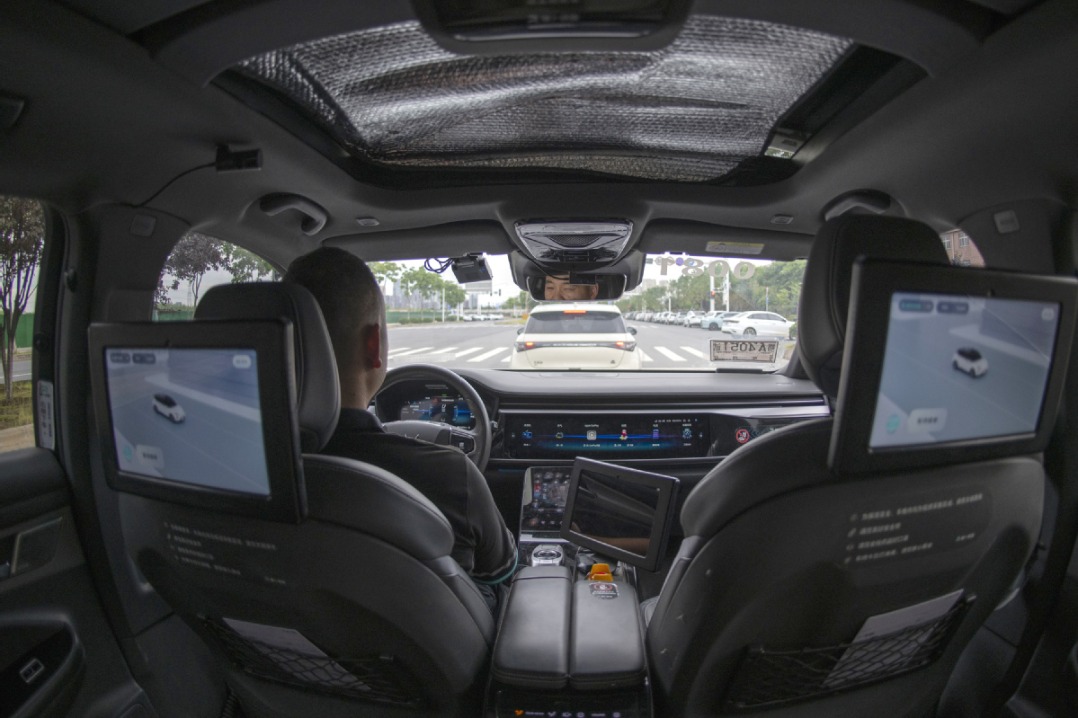Collaboration with SE Asian nations can help advance AI


China has made significant advances in artificial intelligence (AI) and its applications, especially in generative AI. But to maintain the pace of advancement, and to ensure the use of AI in an inclusive and harmonious manner, China needs to work more closely with other countries.
AI has two distinct sides to it. The first is the ability to simplify functions by introducing new solutions. These solutions have transformed people's lives in unprecedented ways. The use of AI is visible in communication between individuals, as well as in learning, health management, mobility, accessing finances, shopping and many other areas. These have brought great benefits for people across the world, particularly in populous countries like China.
AI also has a second, and somewhat dark, side to it. It has created new insecurities — as the increase in new crimes in AI-based service sectors such as banking and online purchases shows. Some insecurities also arise from the spread of misinformation and malicious activities such as spreading fake news and falsities through online platforms.
Besides, AI is also turning out to be a divisive factor, because it has been widening the digital divide in countries, as more technologically literate people are benefiting more from AI applications than those who are not so tech-savvy.
Keeping both the positive and negative aspects of AI in mind, China, which is leading the world in many aspects of AI technology, should collaborate with other countries to ensure the benefits of AI's advancement are maximized and the damage reduced as much as possible. It is particularly important that China collaborates with other Asian countries in its neighborhood.
The Southeast Asian region is very important for China. China shares land borders with Myanmar, Laos and Vietnam, and maritime borders with Indonesia, Malaysia, Singapore, Brunei and the Philippines. China's relations with the Southeast Asian countries have deepened significantly over the past decades due to the expansion of the regional supply chains, intra-industry trade and robust movement of people. In this respect, Southeast Asia is a region with which China's collaboration in AI assumes considerable significance.
Looking at China's prospective collaboration with Southeast Asia, it is important to keep in mind a few key factors.
The first important factor is the rapid growth of AI, which has taken the world, especially the policymakers, by surprise. Over the past decade, the rate of growth in AI-based applications has been phenomenal. This has been accompanied by tremendous growth in generative AI such as ChatGPT.
With several countries actively working to make innovative breakthroughs in AI, all collaborative ideas between countries and regions, such as China and members of the Association of Southeast Asian Nations, might lag behind the pace at which AI is advancing. Collaborations, therefore, must be forward-looking, and should be aimed at leading the advancements of AI apps in various fields.
The second important factor China should keep in mind while moving forward with collaborations is to understand the differences that exist between countries in terms of their capacity to collaborate on AI. Quite a few countries in Southeast Asia are still in an early stage of adopting AI. In this respect, the difference between AI adoption by China in its domestic economic and social spheres vis-à-vis those by some other countries is vast. As a result, China needs to take note of these differences while establishing collaboration with other countries.
A last point to be noted is the difference between China and Southeast Asian countries in AI regulations, because there is a marked difference among Southeast Asian countries in this regard. Some Southeast Asian countries are yet to make progress on basic regulations for AI and its progress and applications. The differences in the quality and ambit of the regulations can be a significant factor in deciding how much rules-based cooperation on AI is possible between China and other countries.
As China and Southeast Asian countries explore collaborations for advancing AI, the above factors will determine the nature of the collaborations. With a country like Singapore, for example, China's collaboration can be in frontier technology development and innovation, given that both Singapore and China are strong in technological capacities. However, for countries such as Vietnam and Cambodia, such collaborations need to be in areas that are less focused on advanced technology, and more on applied practices and grassroots learning.
The author is a senior research fellow and research lead (trade and economics) at the Institute of South Asian Studies, National University of Singapore.
The views don't necessarily reflect those of China Daily.


































